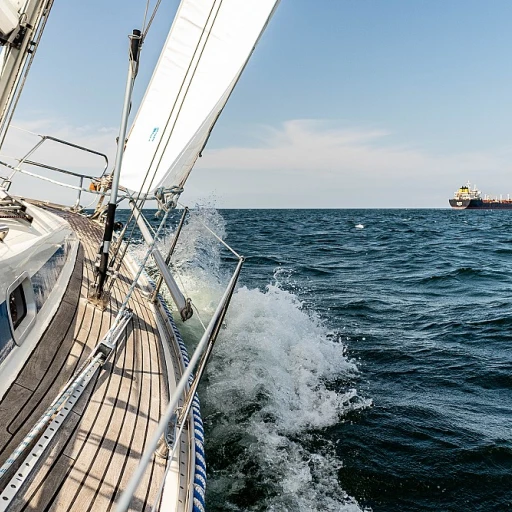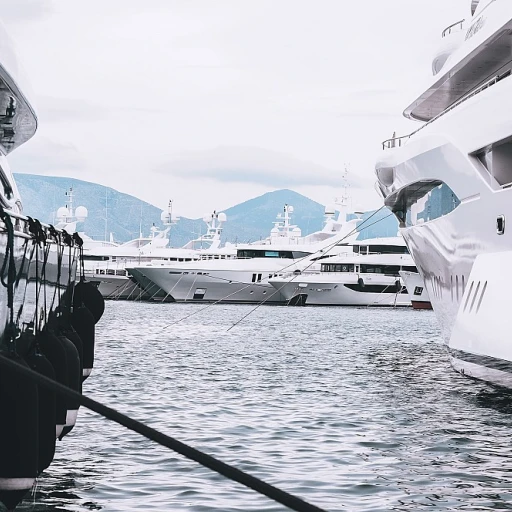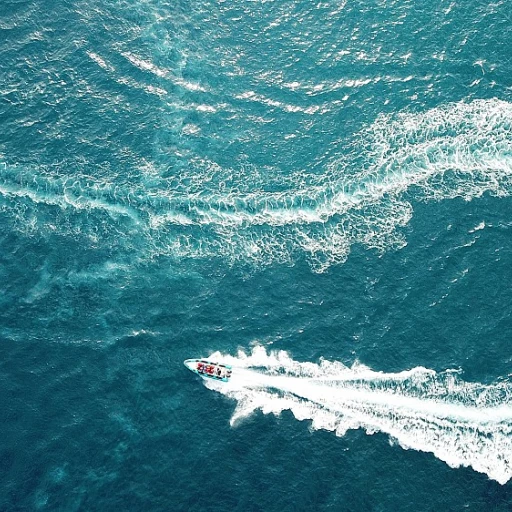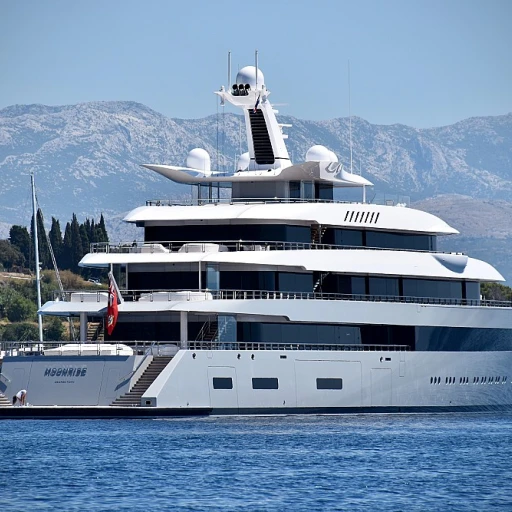Understanding the Rigging Knife
The Multi-Purpose Tool of the Sea
In the yachting world, the rigging knife holds a prestigious title as the multi-purpose tool of the sea. Built for sailors, this essential knife is more than just a sharp instrument; it's an integral part of sail management and maintenance. It aids in every task from cutting rope to performing intricate work with its marlinspike, and it’s crucial in both everyday and emergency scenarios.
When it comes to design, rigging knives can vary significantly, but they typically feature a reliable sheepsfoot blade, known for its straight edge ideal for cutting through tough sailing ropes. The handle is often crafted to provide a secure grip, even in wet conditions, reflecting a focus on functionality over flamboyance.
Many modern rigging knives come equipped with additional features, such as a shackle key or even a folding knife option, emphasizing practicality. With variants made from materials like stainless steel, these knives offer durability and resistance to salt water corrosion, ensuring a long-lasting companion for any sailor.
Selection involves weighing factors like handle material, blade shape, and whether it includes a sheath or marlin spike. Price can range from budget to premium units, often reflecting the material quality and included features. In the quest to find the perfect rigging knife, sailors can explore both in-store options and
exclusive offers online, balancing their needs with their budget.
Safety First: The Rigging Knife as a Lifesaver
Prioritizing Safety Onboard
Every seasoned sailor knows that safety is paramount on the high seas, and a rigging knife serves as an invaluable tool in this regard. With its versatile design, the knife ensures that sailors can tackle emergencies efficiently. Whether you're working with ropes or sails, having a specialized tool like this at hand can make a significant difference in urgent situations.
The sharp blade is designed to swiftly cut through thick rope, and in environments where time is of the essence, like a sudden storm or unexpected snag, this capability is crucial. A well-maintained serrated edge, often a feature of deluxe rigging knives, provides enhanced cutting prowess against tough materials. It's a lifesaver that can prevent smaller issues from escalating into more dire scenarios.
Additionally, many rigging knives come equipped with a marlin spike—a slender, pointed tool that proves invaluable for untying knots or splicing lines. The versatility of marlin spikes ensures that you're not only safeguarded but also efficient in managing the rigging's integrity. Moreover, sheaths provide a safe, accessible way to store the knife, ensuring it's always within arm's reach without compromising safety.
Considering the exposure to harsh salt water environments, investing in a stainless steel blade is a wise choice to maintain both durability and reliability. This material resists corrosion and maintains its sharpness, making it an essential part of a sailor's toolkit. Often available with exclusive offers, the price of these tools can vary, but their safety benefits are priceless.
To fully explore the multitude of benefits these knives offer and how they elevate safety levels onboard, dive deeper into the workings of maritime tools and equipment, enriching your yachting experience. For a touch of leisure, consider delving into practical grabbing solutions that enhance your nautical journey.
Maintenance and Care for Your Rigging Knife
Caring for Your Trusted Companion on the Waves
Proper maintenance and care are crucial to ensure that your rigging knife remains a reliable tool on board. A well-maintained knife is not just a matter of longevity but also of safety, as a dull or corroded blade can compromise a sailor's ability to perform essential tasks. Whether you're handling a classic sheepsfoot blade or a folding knife with a serrated edge, these steps will help preserve its functionality.
Given their frequent exposure to salt water, rigging knives need regular cleaning to prevent rust and corrosion. Rinse the blade under fresh water after each use and carefully dry it to prevent any salt build-up. Applying a thin layer of oil to the blade can provide extra protection and keep the edge sharp for cutting ropes or opening knots with ease.
The sheath, often crafted from durable materials like leather, demands attention as well. Regularly check for wear and tear, as a damaged sheath may not securely hold the knife, increasing the risk of accidents on deck. Maintaining the marlinspike is equally important – it should be checked routinely to ensure it remains rust-free and operational. A blunt spike won't serve well in emergency situations.
Proper storage plays a significant role. When not in use, ensure that your knife is stowed securely, preferably in its sheath, to avoid unwanted contact with other tools in your kit. For those invested in high-quality units, taking advantage of exclusive offers on sharpening services or marlin spike replacements can be a worthwhile investment to maintain your rigging knife in peak condition.
Lastly, always remember that regular knife sharpening is essential for safety and efficiency. A sharp blade cuts not just more effectively but also more safely, providing you the precision required to swiftly manage tasks at sea. Investing time in regular upkeep ensures that your rigging knives remain trusted companions, always ready to face the challenging yachting world.
For more insights into enhancing your yacht's tools and experience, explore this exploration of yachting enhancements.
Choosing the Right Rigging Knife for Your Needs
Selecting the Perfect Rigging Knife
When choosing a rigging knife, it's important to consider several factors that align with your specific yachting needs. A high-quality blade is essential, and stainless steel is a popular choice due to its resistance to salt water corrosion. This is vital for maintaining the knife's cutting edge and durability.
Whether you opt for a sheepsfoot blade, which is known for its safety and precision, or a serrated edge that excels at slicing through tough rope, selecting the right blade shape is crucial. Many sailors find value in knives that feature a marlinspike or shackle key, adding multifunctionality to this essential tool.
The choice between a fixed or folding knife often depends on personal preference and convenience. Folding knives with a locking mechanism can be safely stowed away, while a fixed blade typically offers more stability and strength.
Also, consider a sheath to protect and easily carry your knife. A leather sheath adds an element of classic style, but ensure it suits the knife's dimensions and securely holds the unit. The grip and handle should be tailored for comfort and control, even in wet conditions.
Lastly, paying attention to the knife's price and quality is prudent. There are deluxe rigging knives at various price units, from regular price offerings to those at significant sale price reductions. It's possible to find exclusive offers without compromising on quality or safety.
To maintain safety and extend the lifespan of your rigging knife, regular knife sharpening is necessary. This ensures the blade remains effective, whether for slicing rope or any emergency cutting tasks on board.
Innovations in Rigging Knife Design
Innovative Designs in Rigging Tools
When it comes to rigging knives, innovations are transforming these indispensable sailor tools. Modern designs have moved beyond the basic blade configuration to include multifunctional features that cater to various maritime tasks.
These days, a deluxe rigging tool can pivot between the sharp efficiency of a sheepsfoot blade and the rugged utility of a marlin spike. This combination makes it easier to handle everything from slicing through ropes with a serrated edge to loosening stubborn shackles with a built-in shackle key.
Material Advancements and Portability
Stainless steel has become the material of choice for these tools, offering durability and resistance to the corrosive effects of salt water. The unit price of stainless steel rigging knives may be higher than their carbon steel counterparts, but their longevity makes them a worthwhile investment. Many modern knives feature a folding unit design, ensuring they can be easily stashed away in a leather sheath or clipped onto a sailor's belt without adding bulk.
For those who prize portability, the folding knife option offers a compact solution, allowing for easy storage in a kit or a shopping cart of boating accessories.
User-Friendly Features
Manufacturers are also focusing on user-friendly features such as ergonomic handles, designed to reduce hand fatigue during prolonged use. Whether it's a deluxe model on sale or a regular price knife, comfort is key.
Knife sharpening is another essential consideration. Advanced rigging knives often come with self-sharpening mechanisms or are compatible with specific sharpening kits, ensuring the tool remains in top-notch condition.
Pricing and Exclusive Offers
Pricing varies widely, with factors such as materials, included features, and whether the knife comes as part of a complete rigging kit (often at a bundle sale price) affecting the final unit price. Always be on the lookout for exclusive offers from reputable retailers, as they can provide significant savings on high-quality knives.
In the ever-evolving world of yachting, innovations in rigging knife design ensure both functionality and convenience, keeping sailors equipped with the best tools for their nautical adventures.
Rigging Knife Etiquette and Best Practices
Practice and Precision: Using Your Rigging Knife with Finesse
For sailors, a rigging knife is by no means just another piece of equipment; it’s a trusted companion on every voyage. Understanding the best practices and etiquette involving its use can elevate your yachting experience, enhancing safety and efficacy.
To maintain the sharpness and functionality of your blade, always ensure to clean and dry your rigging knife thoroughly after exposure to salt water, which can dull even blades made of stainless steel. Regular knife sharpening is key, as a sharp blade is safer and more efficient.
When using the knife, precision is crucial. Whether cutting through rope or using the marlin spike to unravel knots, handling the tool with care ensures both personal safety and optimal performance of the knife. In scenarios where you might find use for a sheepsfoot blade or serrated edge, make sure you're familiar with each component's specific application.
Always keep the knife secured in its sheath when not in use. This simple practice prevents accidents and enhances the lifespan of the knife, safeguarding the investment you made, whether it was at a deluxe rigging sale or a more regular price point.
Moreover, if you're shopping for a new rigging kit, consider the grip of the handle—ergonomic designs can significantly improve control and reduce the risk of slipping. Understand the functionality of additional features such as a shackle key or folding mechanisms, which can improve your toolkit's versatility.
Lastly, respect for others aboard is essential. Using a rigging knife responsibly and with respect for fellow sailors fosters a safe and professional environment. Remember, a well-prepared sailor with the right tools is a confident sailor.
-large-teaser.webp)













